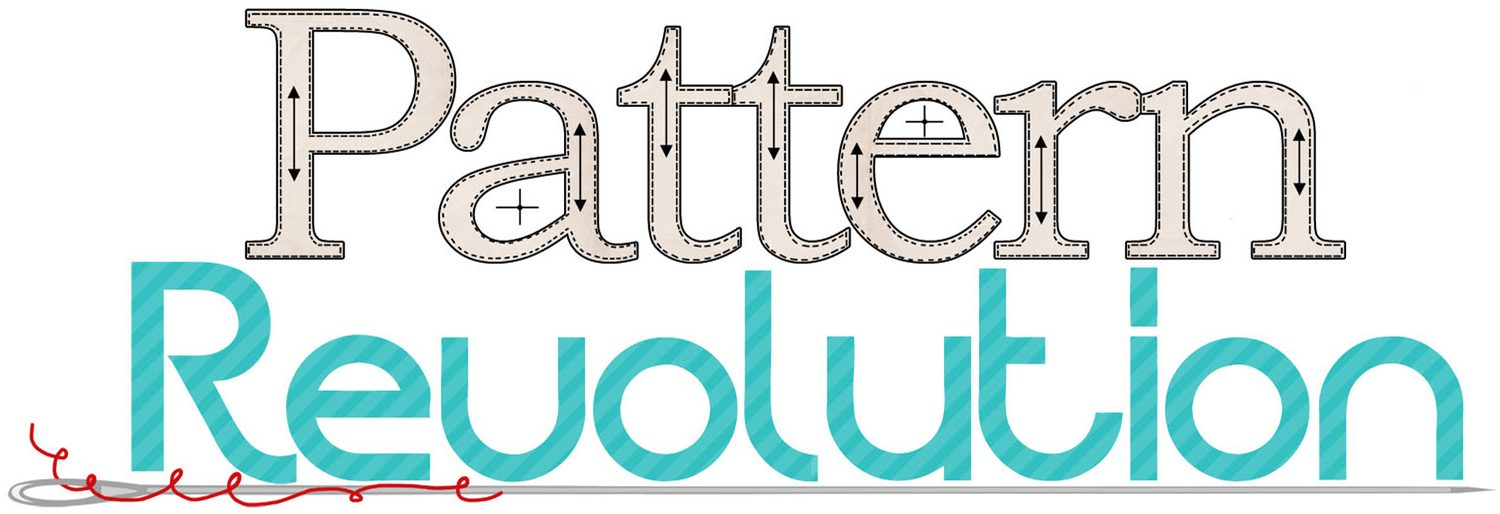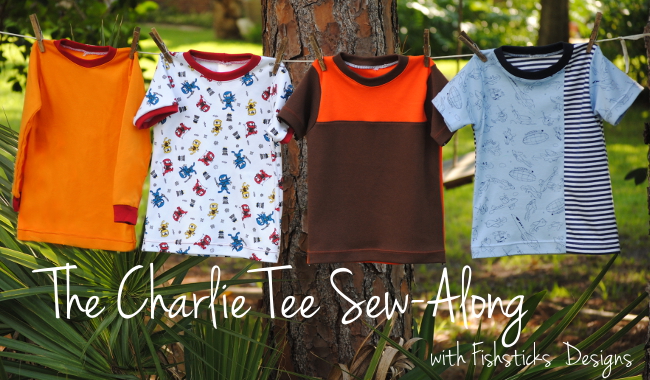
Hello, fellow sewing enthusiasts! I'm Bonnie from
Fishsticks Designs, and I am so excited to get to sew with you for the next two weeks. This week, we're going to walk through sewing the Charlie Tee step by step here at Pattern Revolution, and next week, we'll do the same for the Charlie Hoodie over on the
FD Blog. I'll be throwing in some tips and tricks and sharing how I do certain things along the way. If you're a little nervous about sewing with knits, don't worry! In addition to what I'll be sharing in the sew-along, we have an amazing group of sewists ready to hold your hand over at the
Fishsticks Designs Sewing Group. Come join us and share your progress each day!
If you still need the pattern, you can find each of the three size ranges on sale for $5 in my pattern store:
Infant & Toddler,
Big Kid Sizes,
Teen & Adult. If you need help choosing fabrics, check out my
Knit Knowledge series. If you're a beginner at sewing with knits, I highly recommend cotton or cotton/polyester interlocks. Be sure to wash and dry your fabrics before getting started.
Each day, we're going to spend about 15 to 20 minutes working on your tee, and on Friday you'll be done! Let's get started! First, you'll need to print and assemble your pattern. You'll find instructions for assembling the pattern right here:
How to Assemble a Fishsticks Designs PDF Pattern.

Once you have your pattern ready, you'll have to decide which style of tee you'll be sewing. This pattern has plenty of options! There's a basic tee, a ringer tee and a long-sleeve tee, and there are two options for color-blocking. Today, we'll walk through getting all of your pieces ready, including color-blocking the front of your tee if you choose to do so.
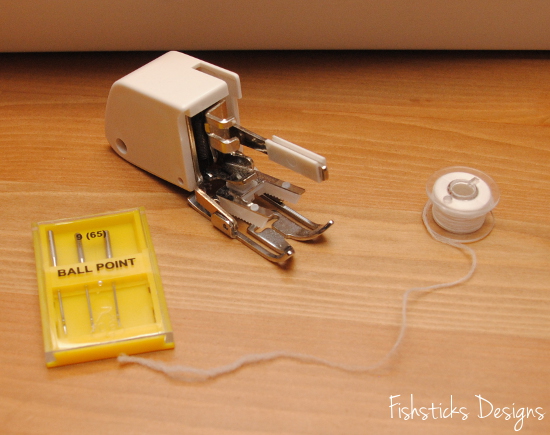
Before you start sewing, there are some basic tools that will help you get great results when sewing with knits. First, you always want to sew knits with a ball point needle. Sharp needles cut through the knit loops on your fabrics and leave the fabric with small holes which tend to grow larger as the garment is pulled on and off. Ballpoint needles are designed to glide through the loops instead without causing harm to the fibers. Knit garments sewn with ballpoint needles will hold up much better over time.
The second tool that you may want to consider is a walking foot. Your sewing machine has “teeth” that guide the bottom of the fabric under the foot while the needle sews. A walking foot has similar teeth that grip the top of fabric so top and bottom pass through under the needle evenly. This feature helps a great deal in cutting down on the amount of puckering that you’ll see in your knit fabric seams..
Finally, I like to fill my bobbin with a stretchy nylon thread like Woolly Nylon or Stretch Maxilock. This gives your stitches a little extra stretch.

Why color-block? The most obvious answer is that it's a simple way to add interest to your sewing, especially when you're sewing for boys. Second, it's a great way to use up small pieces of fabric, whether you have scraps from another project, recycled pieces from old clothing or tiny bits of expensive fabric purchased on a budget. (Really cute knit prints can get expensive. It's okay to buy small pieces and use color-blocking to mix them in with other knits.) Finally, my secret favorite reason for using color-blocking is that knits with white backgrounds and small children don't mix well! I can't tell you how many times I've run across a knit print that I love, but I keep moving because it has a white background. (Yes, I'm thinking I'm probably going to regret that white background ninja shirt that you'll see below.) With color-blocking, though, you can mix those light fabrics with darker fabrics and have less chance of a permanent stain.
If I haven't convinced you to color-block yet, then just scoot down to the bottom of this post (or read through the next few steps, since you may want to color-block next time!) Rather than cutting a pattern for each color-blocking option, I just print one and fold along the color-blocking lines, as needed.
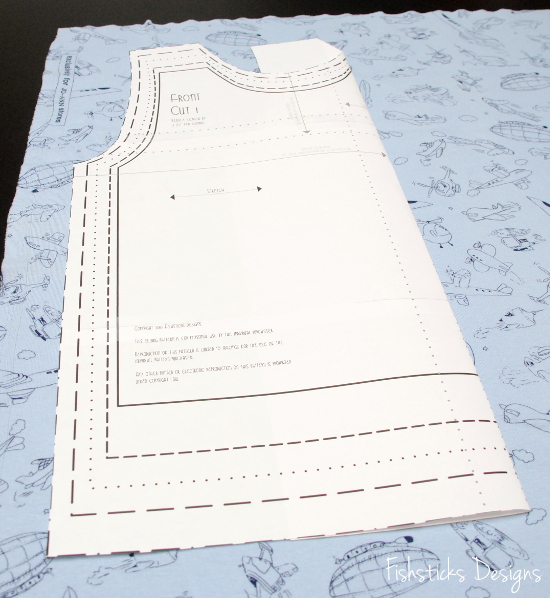
I prefer to trace my patterns with fine tip washable Crayola markers. They last a lot longer and trace a lot darker than any fabric marker I've tried, and I've never had them not wash out of a fabric. (When you trace along a quilting ruler, though, you will end up with marker all over your hands. Just make sure you take a minute to wash your hands before you grab a sandwich for lunch!) This is the perfect season to stock up on these, too, since back-to-school sales are running all over town.
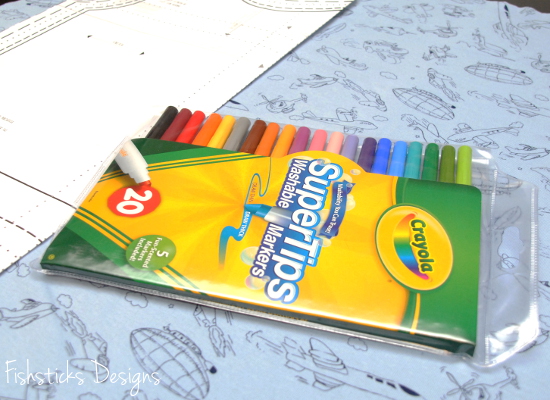
Trace one side of your color-blocking, folding the pattern back and forth as needed. I'm doing the vertical color-blocking in this example.
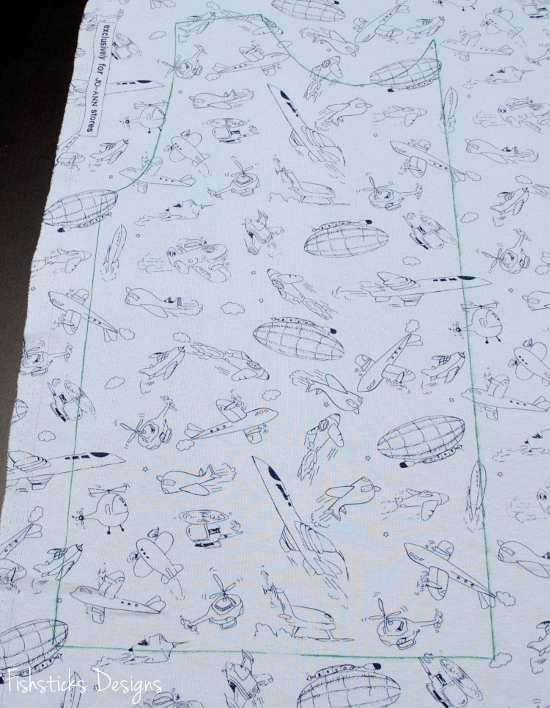
Cut out the pattern piece.
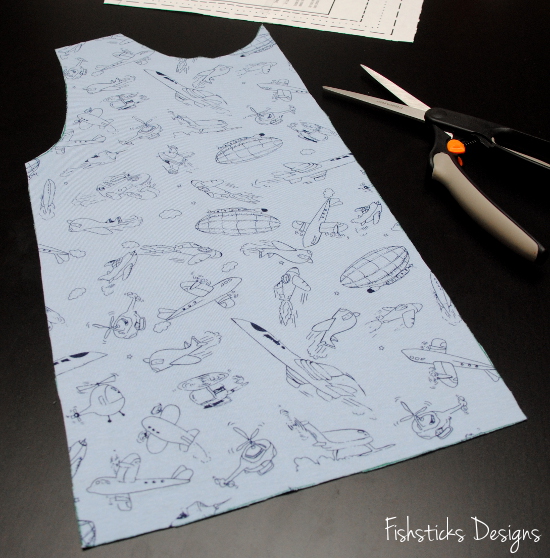
Instead of folding the pattern back and forth, you can also trace the outside edges of the pattern.

Then, move the pattern out of the way and use a ruler to draw in the straight edges.
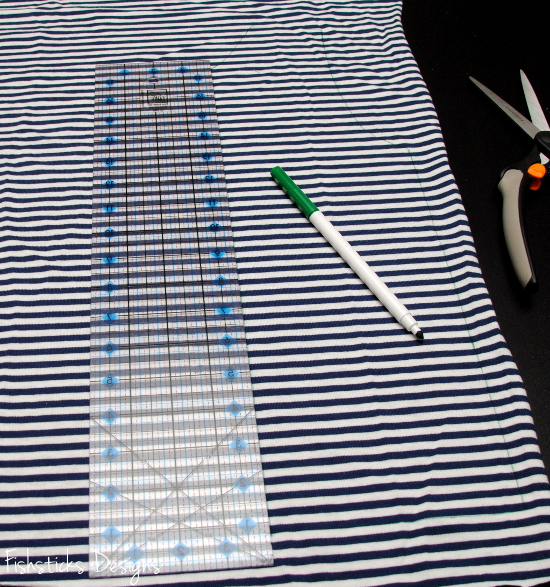
Once you have both pieces of your colorblock cut out, you're ready to sew them together.
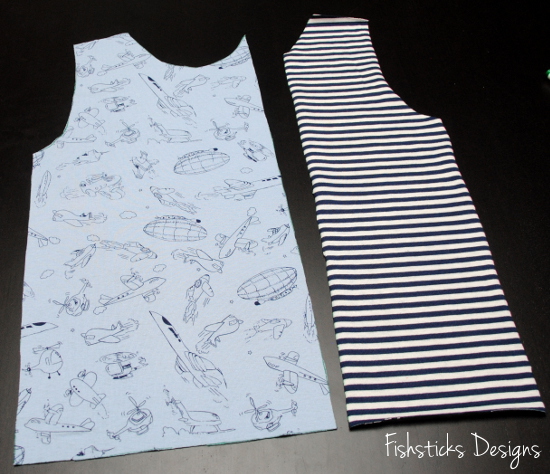
You'll have a little overlap at the top when you pin the vertical color-blocking pieces together, and on both sides when you pin the horizontal color-blocking pieces together. If you're serging, the overlap will be cut off by your serger blade. If you're sewing, you can trim it away after you've sewn the pieces together.

Sew or serge the two pieces together.
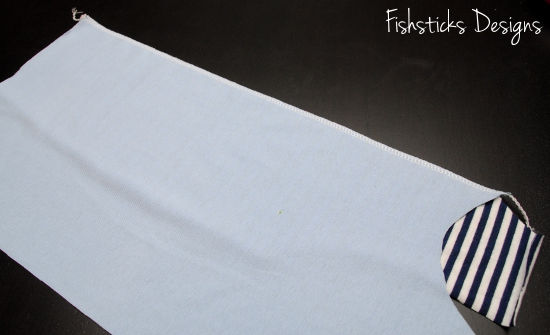
Press the seam to one side (either side is fine) and topstitch 1/8" from the seam on the side the seam is pressed to.
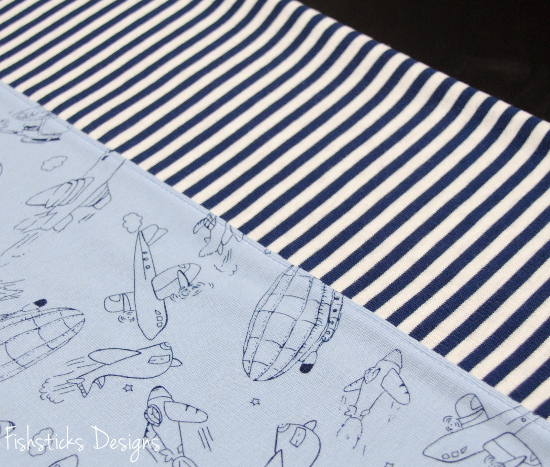
Once your color-blocking is finished, you'll just treat this as the front of your tee. Here's the vertical color-blocked front.
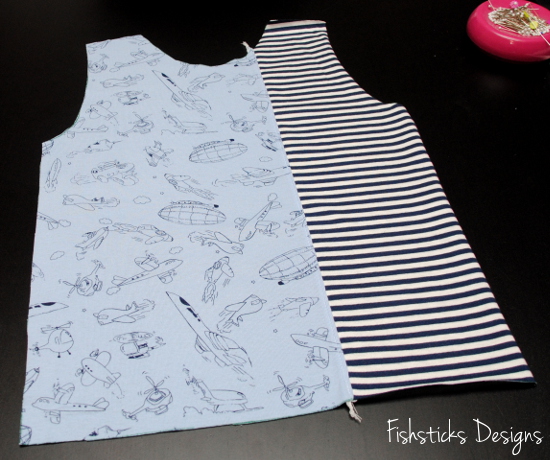
Here is the horizontal color block.
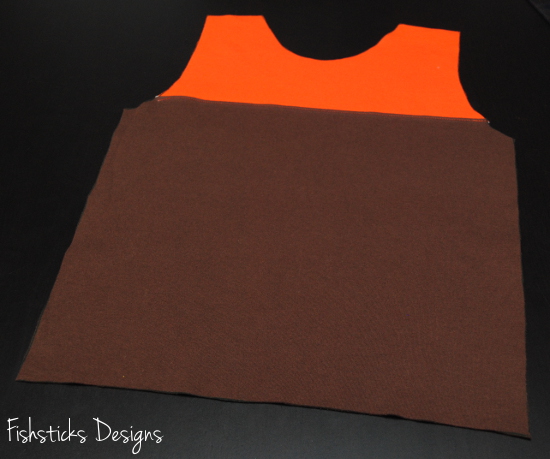
If you opt not to color-block, you'll cut the full front of your tee from one fabric.
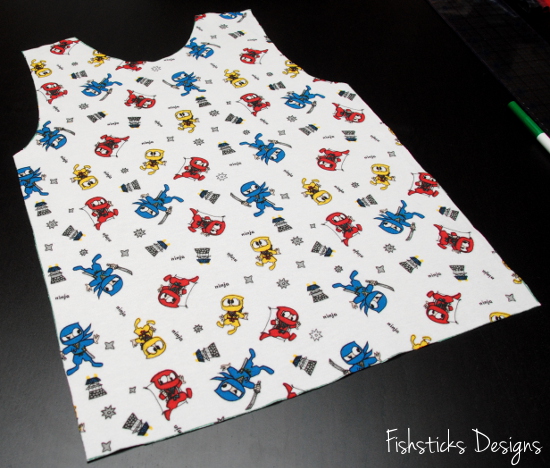
Now that you have the front of your tee ready, you'll need to cut out the remaining pieces. For the Basic Tee, you'll have a front, a back, two sleeves and a neckband.
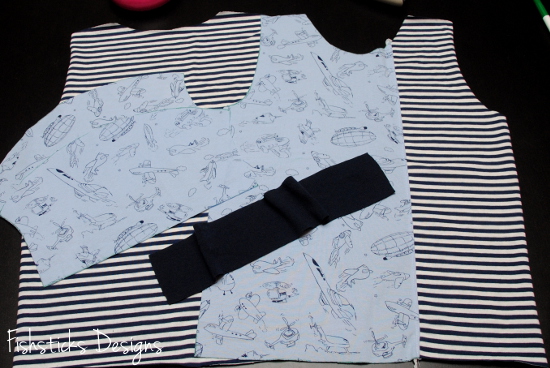
For the Ringer Tee or Long-sleeve Tee, you'll have a front, a back, two sleeves, a neckband and two sleeve cuffs.
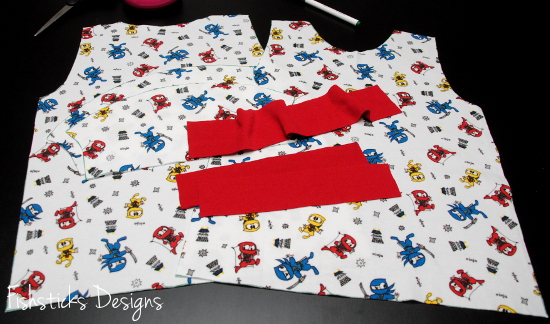
That's it for today! The set-up takes a little longer than the rest of the process. The rest of the week will go a lot faster. Tomorrow, we'll work on hemming. If you have a twin needle, get it ready. If not, I'll give you some other options, as well!



















